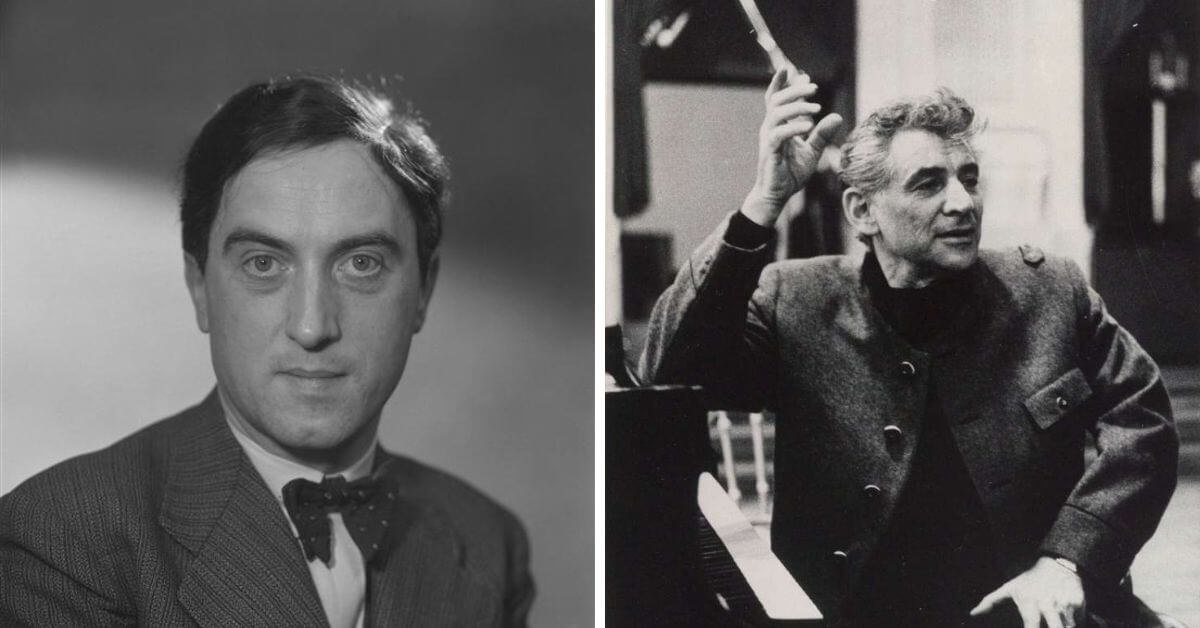The Amadeus Choir of Larger Toronto will finish their 2024/25 season with a live performance on Could 4 that brings collectively Leonard Bernstein’s Chichester Psalms and Maurice Duruflé’s Requiem. The 2 works are thought-about among the many twentieth century’s choral masterpieces.
The Could 4 live performance takes place within the atmospheric Metropolitan United Church, performed by Kathleen Allan. The soloists embrace:
- Alex Hetherington, Mezzo-Soprano
- Jesse Blumberg, Baritone
- Ryan Talebi, Boy Soprano
- Amahl Arulanandam, Cello
- Jonathan Oldengarm, Organ
- Zane Mallett, Harp
- Yang Chen, Percussion
Leonard Bernstein: Chichester Psalms
Reverend Walter Hussey, Dean of the Cathedral of Chichester in Sussex, England, wrote to Leonard Bernstein in December 1963. He requested a bit for the Cathedral’s music competition, set for August 1965. The competition efficiency would carry collectively the cathedral choruses of Chichester, Winchester and Salisbury.
“Many people can be very delighted if there was a touch of West Aspect Story concerning the music,” Hussey hinted in his letter, mentioning that maybe Psalm 2 can be appropriate.
Bernstein took on the problem, however used what he referred to as “selective verses from Psalms” somewhat than specializing in Psalm 2. It might be the primary work he composed after the Third Symphony, Kaddish, which he accomplished in 1963 in reminiscence of President Kennedy.
Within the Chichester Psalms, Bernstein mixed components of conventional Church music with Judaic liturgy, and his rating particularly requires the vocal elements to be sung in Hebrew. In reality, he makes use of the rhythms of the Hebrew language to information the melody, together with the jazzy components widespread to lots of his works.
The piece is essentially tonal, in distinction with many items he was writing throughout that interval.
Bernstein commented on it throughout a 1977 press convention, “I spent nearly the entire 12 months writing twelve-tone system and much more experimental stuff. I used to be completely satisfied that each one these new sounds had been popping out: however after about six months of labor I threw all of it away. It simply wasn’t my music; it wasn’t trustworthy. The tip outcome was the Chichester Psalms which is essentially the most accessible, B-flat majorish tonal piece I’ve ever written.”

Maurice Duruflé: Requiem, Op. 9
A famous organist and instructor on the Paris Conservatoire throughout his lifetime, as a composer, Maurice Duruflé left a list of solely 11 printed works on his dying. Because of practically crippling self-critique and self-doubt, his output was painfully sluggish.
“I work slowly, and I throw lots away,” he wrote.
His Requiem, Op. 9, is a setting of the Latin Requiem for a solo baritone, mezzo-soprano, combined choir, and organ. He started the work in 1941, when the Vichy authorities, which collaborated with the occupying German forces, provided sizable commissions to pick out French composers. Duruflé accepted with the intention of composing a symphonic poem.
However, as common, his progress got here at a snail’s tempo.
Alongside the way in which, he deserted the thought of a symphonic poem, and as an alternative wished to put in writing a Requiem Mass. He was nonetheless working away on the undertaking when the Vichy regime collapsed in 1944, and nonetheless engaged on it for an additional three years till it was lastly accomplished in 1947.
The Requiem’s music relies in or plainchant, a monophonic sort of chant used within the Church. Essentially the most generally identified model is Gregorian chant. Duruflé had attended a choir faculty between the ages of 10 and 16, and was influenced by the modal harmonies and plainsong custom all through his profession.
To the venerable musical mode, he expands the melodic components, and provides impressionistic harmonies. In his personal program notes, he wrote,
“This Requiem is solely composed on the Gregorian themes of the Mass for the Useless. Typically the musical textual content was fully revered, the orchestral half intervening solely to help or touch upon it; generally I used to be merely impressed by it or left it fully. Basically, I’ve sought above all to enter into the attribute fashion of the Gregorian themes.”
Plainsong can be notable for its unmeasured rhythms. “The sturdy beats needed to lose their dominant character with the intention to tackle the identical depth because the weak beats in such a approach that the rhythmic Gregorian accent or the tonic Latin accent could possibly be positioned freely on any beat of our fashionable tempo.”
He continues,
“This Requiem shouldn’t be an ethereal work which sings of detachment from earthly worries. It displays, within the immutable type of the Christian prayer, the agony of man confronted with the thriller of his final finish. It’s usually dramatic, or stuffed with resignation, or hope or terror, simply because the phrases of the Scripture themselves, that are used within the liturgy. It tends to translate human emotions earlier than they’re terrifying, unexplainable, or consoling future.
“The organ has solely an incidental position. It intervenes, to not accompany the choir, however solely to underline sure accents or to make one momentarily overlook the all too human sonorities of the orchestra. It represents the thought of peace, of Religion, and of Hope.”
- Discover extra particulars, and tickets, for the Could 4 live performance [HERE].
Are you seeking to promote an occasion? Have a information tip? Have to know the most effective occasions taking place this weekend? Ship us a notice.
#LUDWIGVAN
Get the day by day arts information straight to your inbox.

